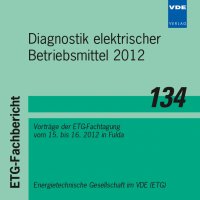Return Voltage Measurements – a Proposing Tool for the Diagnosis of the Insulation Condition of Power Transformers
Konferenz: Diagnostik elektrischer Betriebsmittel - ETG-Fachtagung
15.11.2012 - 16.11.2012 in Fulda, Deutschland
Tagungsband: Diagnostik elektrischer Betriebsmittel
Seiten: 6Sprache: EnglischTyp: PDF
Persönliche VDE-Mitglieder erhalten auf diesen Artikel 10% Rabatt
Autoren:
Patsch, Rainer (Materials & Diagnostics in Electrical Engineering (1986-2009), University of Siegen, Germany)
Inhalt:
Dielectric diagnostics are an important tool to characterize ageing and degradation of hv-power equipment. Return Voltage Measurements and especially the so-called p-factor have proven to be an efficient tool to characterize the degradation of paper-oil cables with cellulose-oil insulations. Attempts to use the so-called Recovery Voltage Measurements (a dielectric measurement and evaluation procedure different from the Return Voltage Measurements discussed in this paper) for power transformers more than a decade ago have been abandoned because of the use of a non adequate interpretation of the measurement results. Nevertheless – performing a different measurement procedure and a physically meaningful interpretation of the measured curves – the application of Return Voltage Measurements on power transformers is also very promising. Starting from the insulation geometry of a power transformer, the basic principle is the use of the two dielectrics cellulose and oil. Thus the insulation system in a power transformer fits very well the conditions described by the Maxwell model for two dielectrics in series. This equivalent circuit is used also for the interpretation of FDS measurements that are frequently used for the diagnosis of power transformers. The interpretation of Return Voltage curves on the basis of the Maxwell equivalent circuit, reveals that the dielectric time constants of the two dielectrics (calculated from the experimentally found Return Voltage curves) are very meaningful and powerful parameters, especially as they are characteristic for the actual dielectric properties of the insulating materials and are not influenced by the actual geometry of the measured system. On the basis of these dielectric time constants, the r - factor, a new diagnostic parameter is presented. Measurements of differently aged transformers show a correct ranking and also a good correlation between the general ageing condition, the oil humidity and the r - factor.


